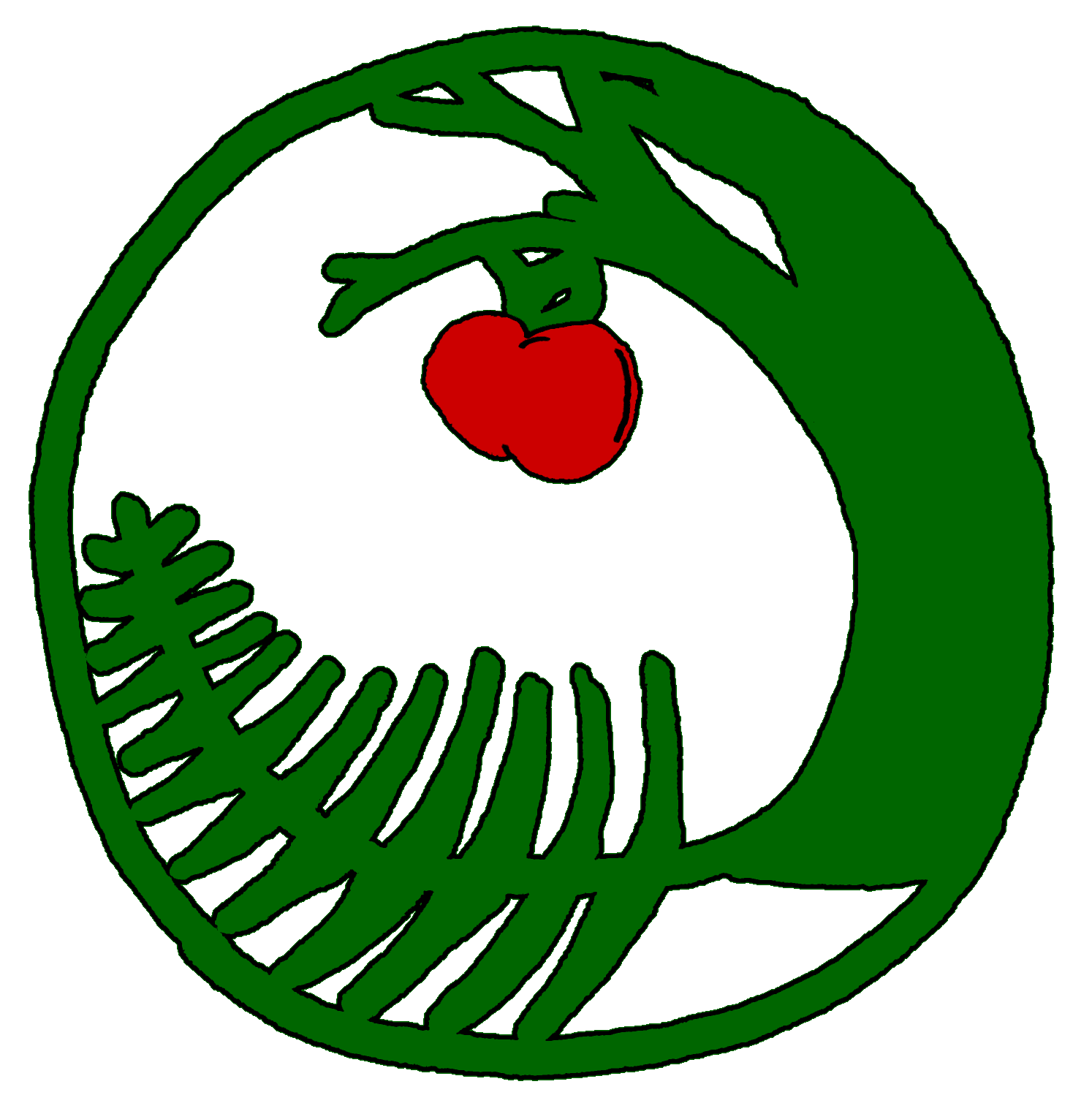'York' is a variety of American elder selected from the cross of Adams #2 and Ezyoff at the Geneva Experiment Station in New York in 1964. Its medium-sized dark berries ripen slightly later than... more->
Fern Hill Nursery and Botanical Sanctuary
Edible, medicinal, and native plants for the Pacific Northwest
We spent 13 years building an abundant fruit forest, annual veggie beds, perennial medicinal herbs, and a healthy mixed hardwood-coniferous forest and now we've sold our property to the next stewards so that we can begin a new homesteading project in Vermont closer to our best friends and their kids.
Don't worry - we plan to keep this website up and running so that our customers can reference what we've written about our plants!
We'll let you know once we re-start a farm in Vermont!
Sold out
Also known as Osborne Prolific, this fig produces a pretty small to medium sized fruit that is purple with yellowish stripes and a rosy interior. Yum! more->
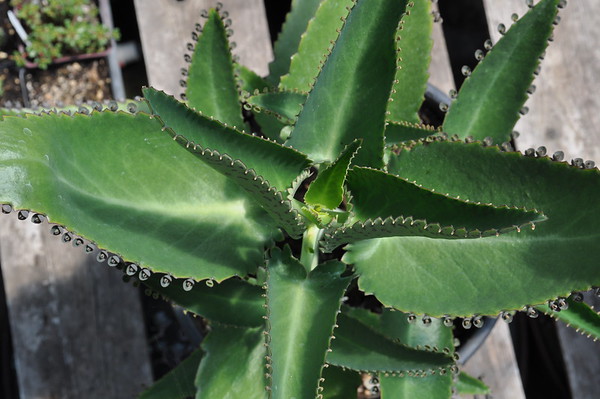
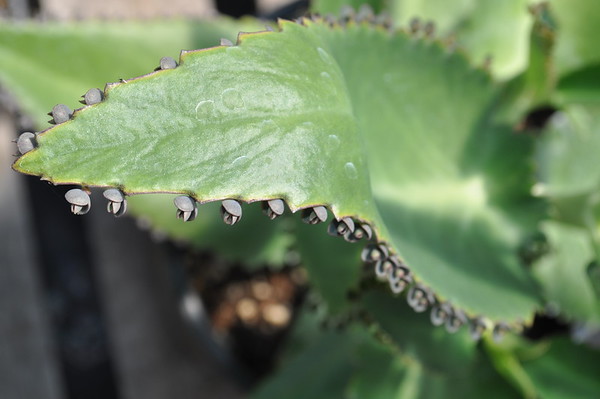
Mother of millions not only inspires wonder and fascination because its little plantlets are so easy to break off and grow into entirely new plants, but it also makes a very nice soothing external... more->
Black Velvet is a very disease resistant, vigorous and productive plant with sweet, dark purple berries. more->
Pixwell is almost thornless. Berries can be harvested when green for pie and jam or harvested when soft and pink for fresh eating. Very productive and fruit is easy to harvest clusters. Mildew... more->
Sabine is a variety we originally obtained from the USDA Germplasm Repository in Corvallis Oregon. This vigorous and disease resistant plant has a medium sized red berry. more->
Hinnomaki Red comes from Finland. The plant bears dark red, sweet and large berries. more->
This species of hardy kiwi stands out from the crowd because it produces coppery red colored kiwi fruit! It can be pollinated by Meader or any of the male Actinidia arguta. more->
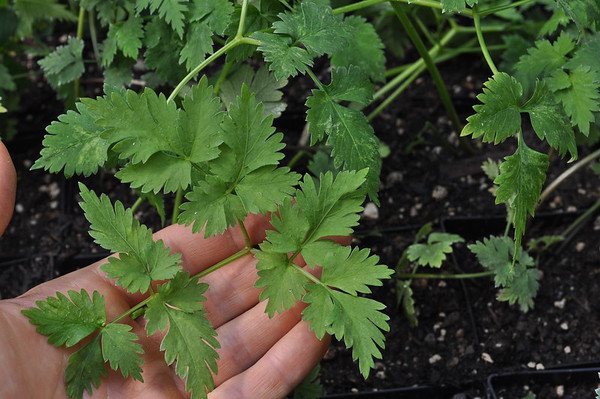
Dong quai is a traditional Chinese medicinal herb that is well known for its ability to help strengthen the heart, lung, and liver meridians. The flavor and aroma is bitter, sweet, and warming... more->
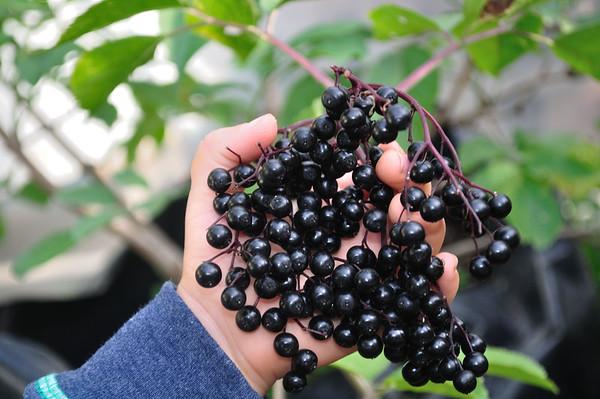
This variety began producing very large clusters of medium-sized dark purple berries for us in the second year, and it has doubled the yield each year since! Samdal was originally developed in... more->

These speckled green and red tubers are a bit smaller than the others, but their cuteness makes up for it. more->
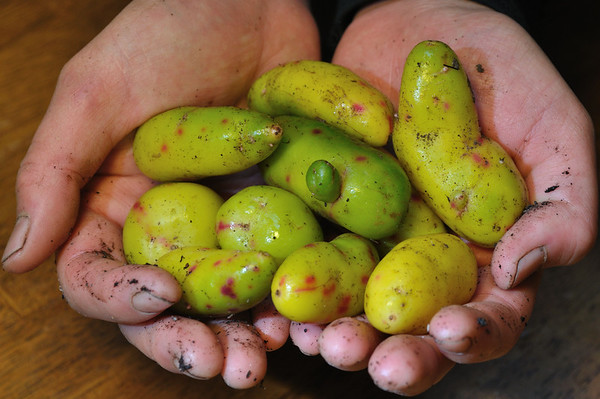
The little red polka dots on the yellow-green tubers of this variety certainly do look like roses in the pasture! more->

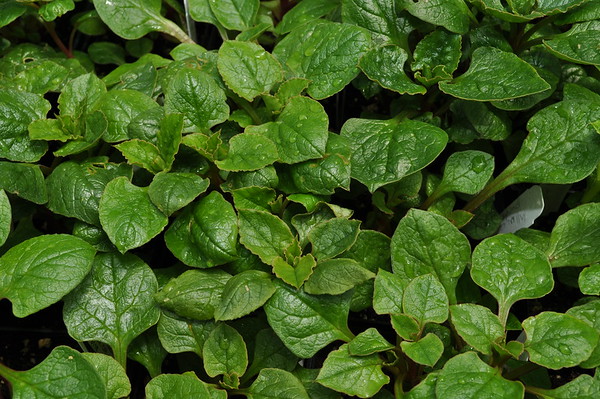
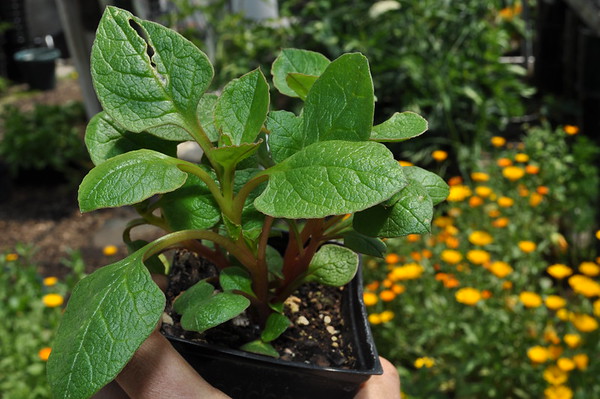
With violet colored tubers, peach colored stems, and really fast leaf growth, this variety is not only eye-catching but also produces loads of fresh spinach-like leaves for us week after week. more->
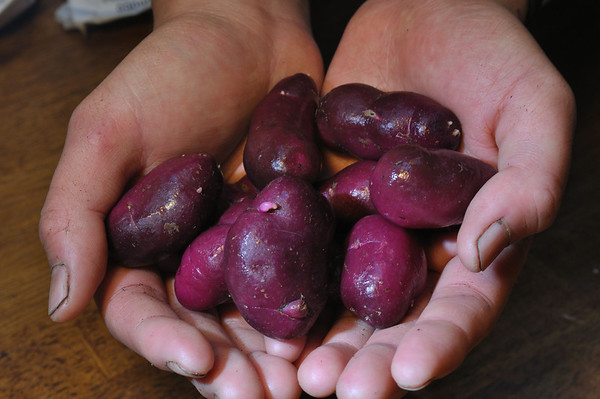
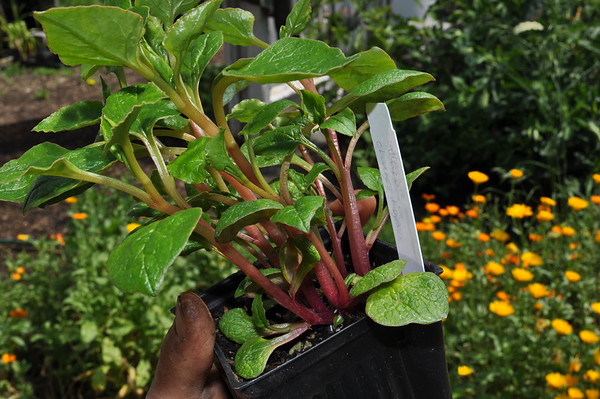
In addition to the strikingly deep purple tubers, this variety produces beautiful pink-purple stems with lots of vigorous growth. more->

The name of this variety translates to little bites of gold, which is quite fitting for such creamy yellow-green tubers that make a really nice autumn snack! more->
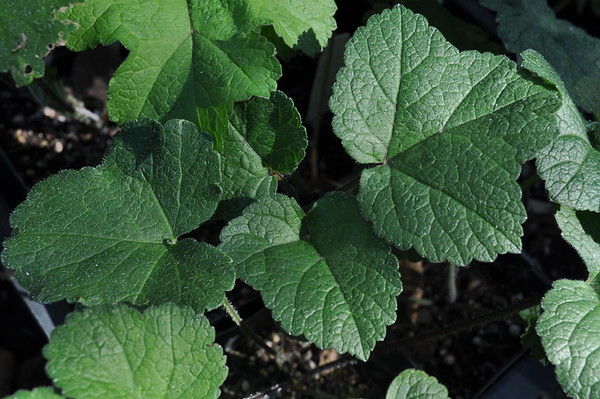
Also known as du huo in Traditional Chinese Medicine, and shishiudo in Japanese medicine, this angelica species is native to just the eastern part of Asia in those two countries... more->
Also known as Bai Zhi in Traditional Chinese Medicine, this angelica species is native to northeastern Asia in Russia, China, Korea, Japan, and Taiwan. This is the first year we've grown... more->
So we like all beebalms, but this one really tops the charts with its sweet and spicy rose scented pink flowers and foliage. The aroma makes a really blissful and warming tea. It contains... more->
This pink-flowered variety was developed in Canada to have superb mildew resistance, which can turn the tops of other varieties white and sickly in extra wet weather. more->
With darker violet-purple flowers than most wild beebalm, this variety is a crowd-pleaser and tastes good too! more->

Native to Sinkat, Sudan, this aloe is similar to Aloe vera in its form and medicinal properties. The Hadendowa people use it to treat stomach and skin issues.
When it's protected... more->
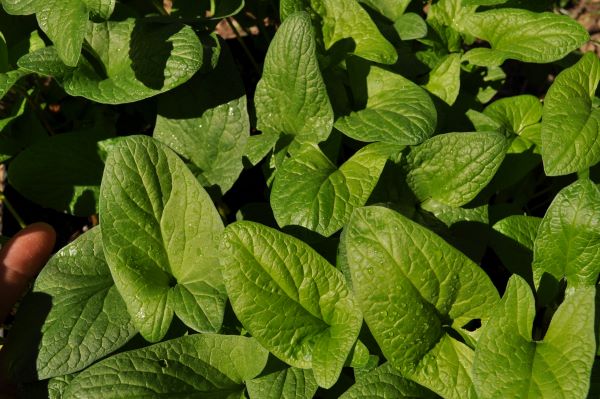
Good King Henry is a perennial vegetable closely related to spinach that produces delicious green shoots in early spring and succulent leaves in late spring and summer. In a partly shady location... more->
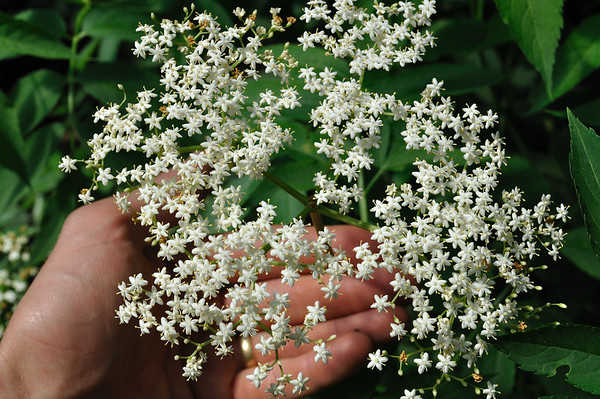
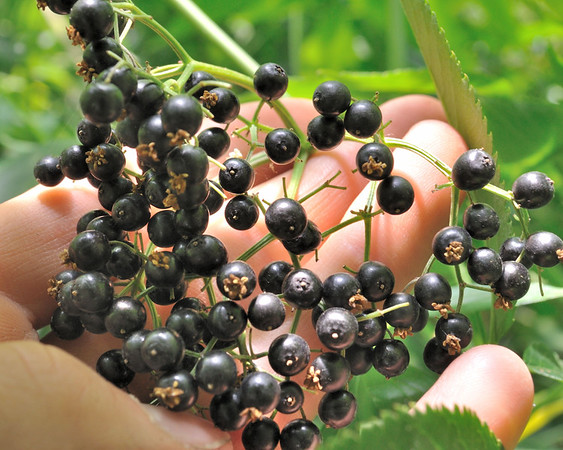
Ranch is shorter and more compact than most elderberry varieties. It gets only 5ft tall, so berries are easier to reach for harvesting. more->

Ostrich fern makes the best edible spring fiddleheads of any fern around. I like to brush off the papery scales, add salt, and steam them lightly to bring out the asparagus-like flavor. Though... more->
Orange scented fragrant thyme has a compact growth form with small leaves more similar to French thyme and German winter thyme than any of the other varieties. What sets it apart is the scent -... more->
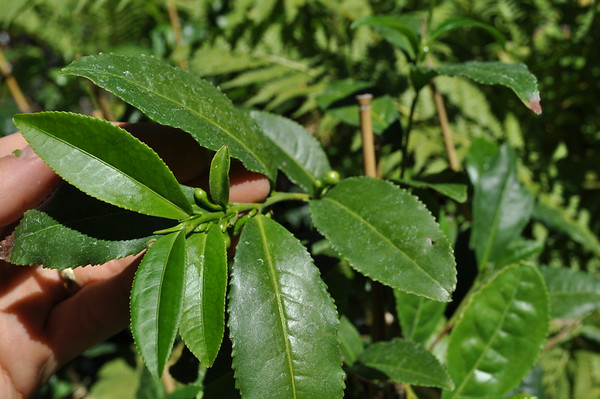
This variety of hardy tea comes from the Sochi region of Russia near the Black Sea. more->
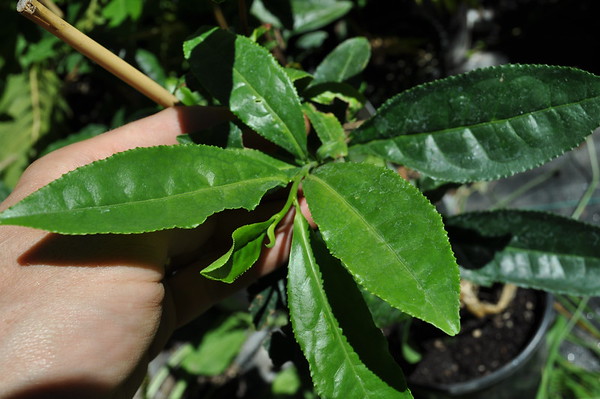
This hardy variety of tea comes from the mountains of the Boseong region in South Korea. more->
Although American persimmons are smaller than their Asian counterparts found in grocery stores, they are just as sweet, juicy, and delicious! While the Japanese Fuyu or Hachiya are grown... more->
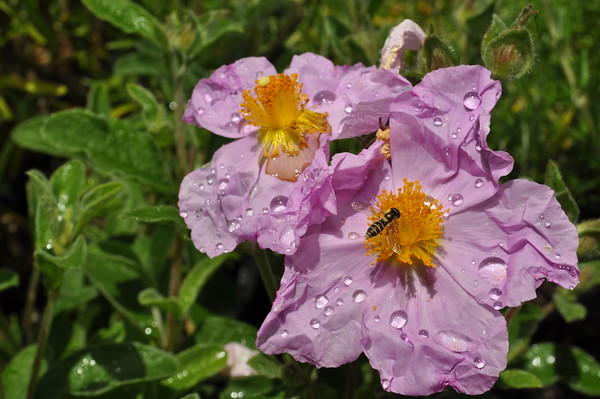
This fuzzy-leaved rock rose makes a smaller, more compact shrub than the pink orchid or white rock roses. While the others easily reach 3-4ft tall, this variety grows to be a perfectly shaped 2ft... more->
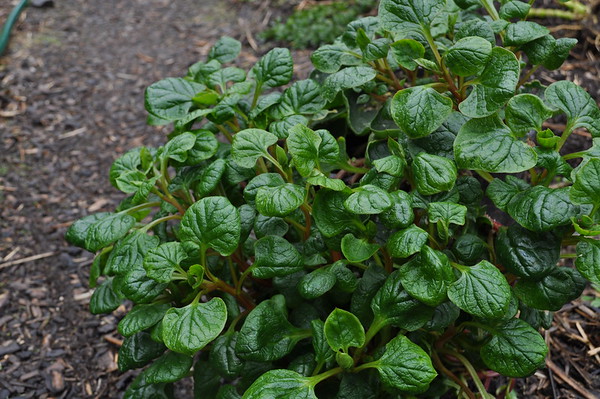

This variety of ulluco is one of the most common and productive in our climate. The pink and yellow tubers might have a bit of green, which makes them just so cute with all three colors! more->
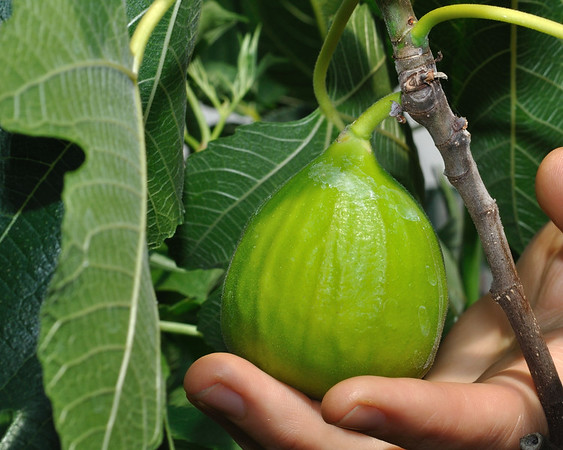
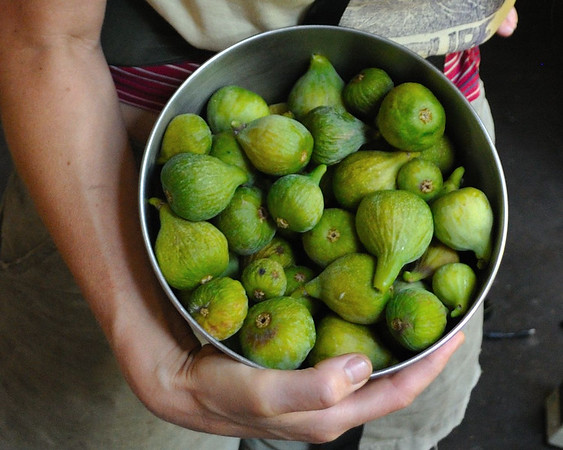
The tasty fruit of this variety has yellow-green skin and a honey colored interior. These are the largest figs we've ever grown. Boy, are they sweet! There is a reason this one is named after... more->
Douglas mugwort is my favorite of the species of Artemisia that we grow. It is native to sunny streambanks and partly shady riparian areas of several western states from Oregon to Mexico... more->

This rock rose has broad, wavy leaves with delicate, triangular tips and paper white flowers. more->
Native to northern California and Oregon, this hardwood shrub in the laurel family grows in sunny or shady hillside forests. I've seen it in moist coastal forests as well as in sun drenched... more->
Our friend Allen reports that this particular Aronia produces plentiful berries. These shrubs readily send up new shoots from near the base of the tallest stems. more->
Poke is native to the sunny plains of the eastern United States. The hardy taproot sends up a flowering stalk up to 6 feet tall that bears small flowers and dark red-purple berries. It is quite... more->
Barbed skullcap is native to southeast Asia including China and Taiwan, often growing on the edges of rice paddies. The fresh plant is used as a vulnerary to help heal wounds and as an anti-... more->
Spotted bee balm blossoms have white, purple, and pink flowers with exquisite dippled spots. This species grows in drier and sandier soil than most bee balms. more->
'Munstead' is an English lavender that is well-known for its heat tolerance and compact form. The tall spikes of deep purple fragrant blossoms are more densely flowered than 'Vera'. more->
This species of Echinacea is native to the central plains of North America, from Texas and New Mexico, all the way north into central Canada. It is the most cold hardy Echinacea and has a longer... more->
Soft rush is a great native wetland plant to have around a pond or swale. Its round, straight stems form a graceful fountain shape, while its rhizomes decrease soil erosion. The roots and stems... more->

This dark purple-green oregano is native to Tajikistan and Uzbekistan, and stands out as a very unique variety of culinary oregano. Compared to Greek or Italian oregano, the flavor is more mild... more->
This beautiful perennial is not only fragrant but also hardy and drought tolerant. The silvery foliage grows about a foot tall with huge spikes of neon orange and red flowers another foot above... more->
Soaproot is native to sunny meadows and oak woodlands of northern California and southwestern Oregon. Like other plants in the agave family, it grows strap-shaped leaves in a basal rosette, then... more->
Skirret is an old word for sugar-root. The white roots are very sweet and have a bit of carrot flavor, which is no surprise because skirret is in the same family. The roots are perennial, but... more->

'Nova' is a variety of American elder, selected for its reliable yield of medium-sized dark berries at a germplasm center in Kentville, Nova Scotia, Canada in 1960. Although it may have better... more->
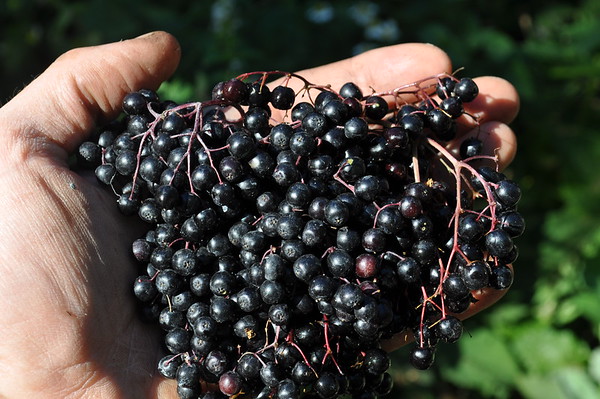
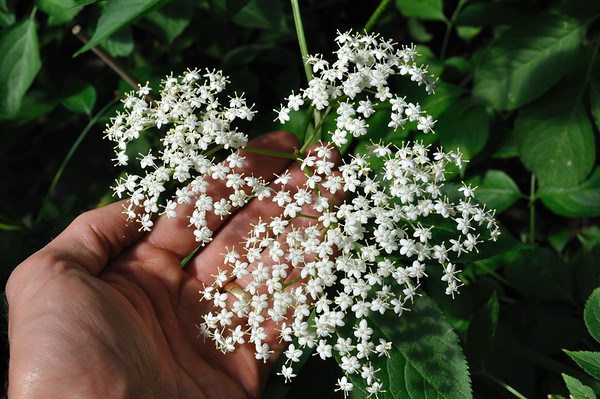
'Haschberg' is a variety of black European elder, especially popular in commercial orchards in Austria and Germany. It produces abundant and large clusters of dark purple berries, and grows to... more->
Henderson's checkermallow is commonly found along the Washington coast, but a few populations grow further south here along the Oregon coast. In the hollyhock family, this perennial grows up to... more->
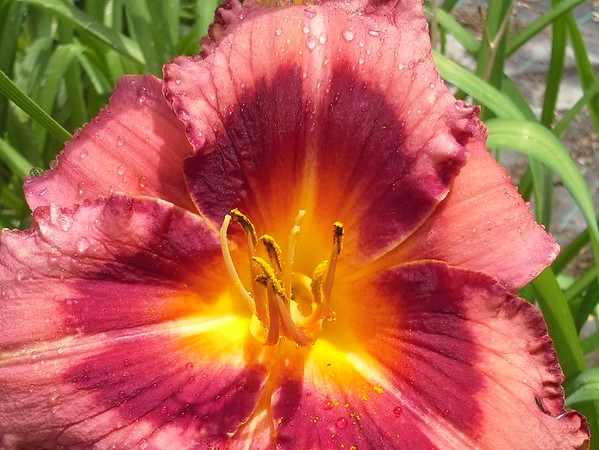
This multicolored red variety of daylily really stands out against a green backdrop! more->
